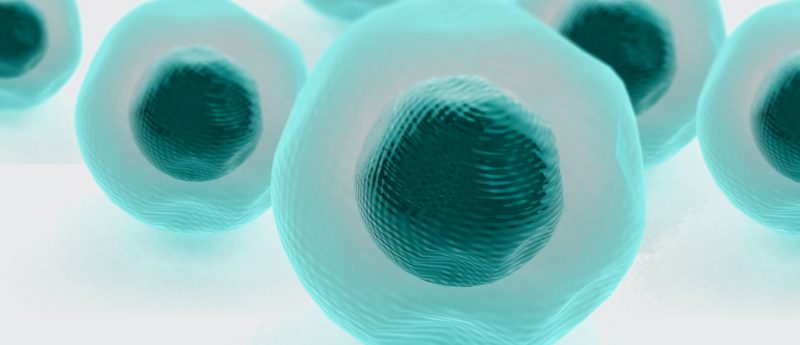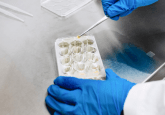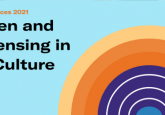Expediting cell therapy regulatory pathways through media selection: an interview with Ravid Grimberg

In this interview, Ravid Grimberg, VP of Quality Assurance (QA) & Regulatory Affairs (RA), Biological Industries (Israel), and Head of QA and RA, Advanced Therapies, Sartorius (Germany), discusses regulatory concerns in choosing your stem cell media for cell therapy applications and how existing frameworks can expedite cell therapy regulatory approval.
Please introduce yourself and your company
After getting my bachelor’s degree in Biology and my master’s degree in Quality Assurance (QA) and Reliability from the Technion – Israel Institute of Technology (Israel), I gained experience by working in different positions in QA and regulatory affairs (RA). 7 years ago, I started working at Biological Industries as Vice President for QA & RA and recently I was appointed to be the Head of QA & RA for the Advance Therapy division at Sartorius. Biological Industries is a Sartorius company with over 35 years of experience in developing, manufacturing and supporting media and auxiliaries for cell culture, life science and biotechnology Industry.
The close work with our customers, who are often in the development stage of designing new cell therapies, gives me great satisfaction. I consult and accompany our customers through their processes with fully understanding and implementation of the various regulatory aspects, requirements and needs. Our customers seek consultation in this field and I feel proud to be able to offer them this added value.
How has the regulation of cell therapies developed in recent years?
When explaining regulatory requirements, I tend to consider two main authorities: the US FDA and the EMA. Both the EU and the US regulation goal is to support innovation and availability of new advanced products, while ensuring public safety and health.
In 1997, FDA published a first document, “Proposed approach to regulation of cellular and tissue-based products“, applying the necessary government oversight to maintain public health with regard to three main points: (1) preventing the use of contaminated tissues/cells in infectious diseases; (2) preventing processes that will cause or contaminate the cells/tissues; and (3) for non-minimal manipulated tissue – implementing clinical study to prove the safety and effectiveness.
Since then, FDA has progressed and written acts and guidelines as part of the framework of human cells, tissues, and cellular and tissue-based products (HCT/Ps). Reading those documents makes me wonder if they will be able to keep the requirements within the necessary framework without adding onerous, political requirements with low risk/benefit ratio.
The requirements for HCT/Ps are detailed under 21 CFR part 1271.10 (a), 21 CFR part 1271 and Section 361 of the PHS Act, which were followed by many guidelines published by CBER since 1997, for example Regulatory Considerations for Human Cell, Tissues, and Cellular and Tissue-Based Products: Minimal Manipulation and Homologous Use. Supportive General chapters were written by the US Pharmacopeia include <1046> Cell and Tissue Based Products, <1047> Gene Therapy Products and <1043> Ancillary Materials.
Advanced therapy in Europe is regulated under “Regulation (EC) No 1394/2007 of The European Parliament and of the Council of 13 November 2007 on advanced therapy medicinal products and amending Directive 2001/83/EC and Regulation (EC) No 726/2004“. In Europe, EMA’s expert committee assesses advanced therapy products and, in November 2017, the EU commission adopted new good manufacturing practice (GMP)-specific guidelines for advanced therapy.
The EU pharmacopeia has published some related monographs, for example:
- Eur. monograph 5.14 on gene transfer medicinal products for human use (01/2010:51400)
- Eur. monograph on human haematopoietic stem cells (Cellulae stirpes haematopoieticae humanae) Version 7.2
- General chapter 5.2.12 Raw materials for the production of cell-based and gene therapy medicinal products
International documents related to advanced therapy were also published by the International Council for Harmonization of Technical Requirements for Pharmaceuticals for Human Use (ICH), for example:
- ICH Q5A (R1) Viral safety evaluation of biotechnology products derived from cell lines of human or animal origin (CPMP/ICH/295/95)
- ICH Q5D Derivation and characterization of cell substrates used for production of biotechnological/biological products (CPMP/ICH/294/95)
When selecting a stem cell media for commercial manufacture, what should you consider?
First and foremost, you would like, of course, to choose the media that perform best for your need. In order to guarantee that, you should carefully pick your supplier. You should think of your supplier as your partner. Choose a supplier that can offer you an overall solution, regarding the product, the auxiliaries, the regulatory support and the scientific support. A good supplier would be able to equip you with regulatory and quality compliance, including submitting information in your target clinical trial countries. You would want to make sure the media are xeno-free or animal component-free safe media, which comply with cell therapy regulatory requirements and guidelines.
Where does the responsibility for ensuring media quality and supply stability lie?
It is the cell therapy company’s (the buyer’s) responsibility to qualify the supplier, manufacturer and medium for the specific needs and intended use. It is our responsibility, as a supplier, to manage a strict quality system and scientific knowledge, to provide you, the buyer, with high quality and safe media which comply to the designed specifications, as well as to be able to support you in the clinical stages.
When preparing a cell therapy regulatory submission, what information is required about your raw materials and manufacturing process?
In order to support your submission, you will need to provide general basic information on the supplier and the materials quality and grades, traceability and information regarding the risk for transmitted diseases when the materials contain human or animal origin components.
You will need to obtain the basic certifications and statements; certificate of analysis (COA) for the batches you used in your development and a general certificate of origin (COO). You can ask for additional statements to support your risk assessment, conclusions and mitigation steps.
You will need to be ready with a media supplier qualification-approved process, which should minimally include an audit by mail and a quality agreement.
If you are submitting to FDA or Health Canada, you would need a letter of authorization (LOA), so we could support you with our Master Files (MFs).
How can a supplier support this submission eg with a Drug Master File (DMF)?
The best way to support our customers is by giving the authorities full access to the comprehensive data about the product, process and quality management system. This is done confidentially by submitting a MF or DMF to the Health Authority.
In some countries it is not possible and we would support you with a product dossier or with an individual information under confidentiality restrict conditions. We would try to adjust the support according to the requirements of the authorities.
What could delay the cell therapy regulatory approval pathway and how can you overcome this?
The regulations are updating all the time. The authority expert committee, which reviews that submission, can decide on case-to-case basis and will sometimes ask for additional controls and requirements. I would recommend using a pre-submission consultation option when available. Be open and transparent with the authorities, and ask for clarifications, but remember you need to have an agenda. Do extensive risk assessment. Know the rules and regulations. Explore similar submissions that were already reviewed. Work with your suppliers and share with them your plans for future submissions.
How do you think the submission process might change in the future?
I would like to think of a harmonized global submission process, which will ensure availability of new drugs, devices and therapies to all. I would be very happy if there were less politics involved.
Until then, the rules will get stricter before they are able to balance the risk and benefit.
We are currently witnessing the activation of shortened emergency submission routes to support the need for COVID-19 tests, vaccines and therapies. Even if this track is not fully controlled and not very profound, it is preferable to the lack of control and panic that have been encountered in some locations.
How can people contact you if they’d like more information?
In order to ensure good communication with all of our customers, we have trained a wonderful team to support you. Your interaction will start with our tech-support, which will pass your inquiry to the QA/RA team when needed. I usually meet with customers in person when they get to the stage, they have qualified the media and we both want to sign a quality agreement, or when they are planning on regulatory submission.





